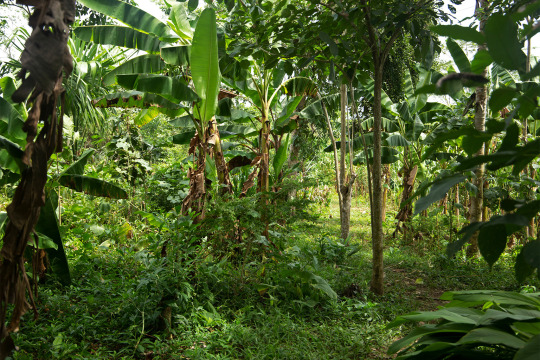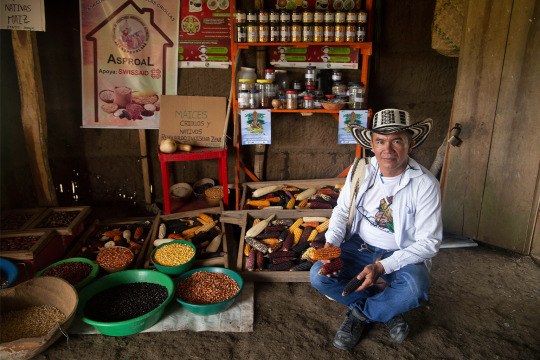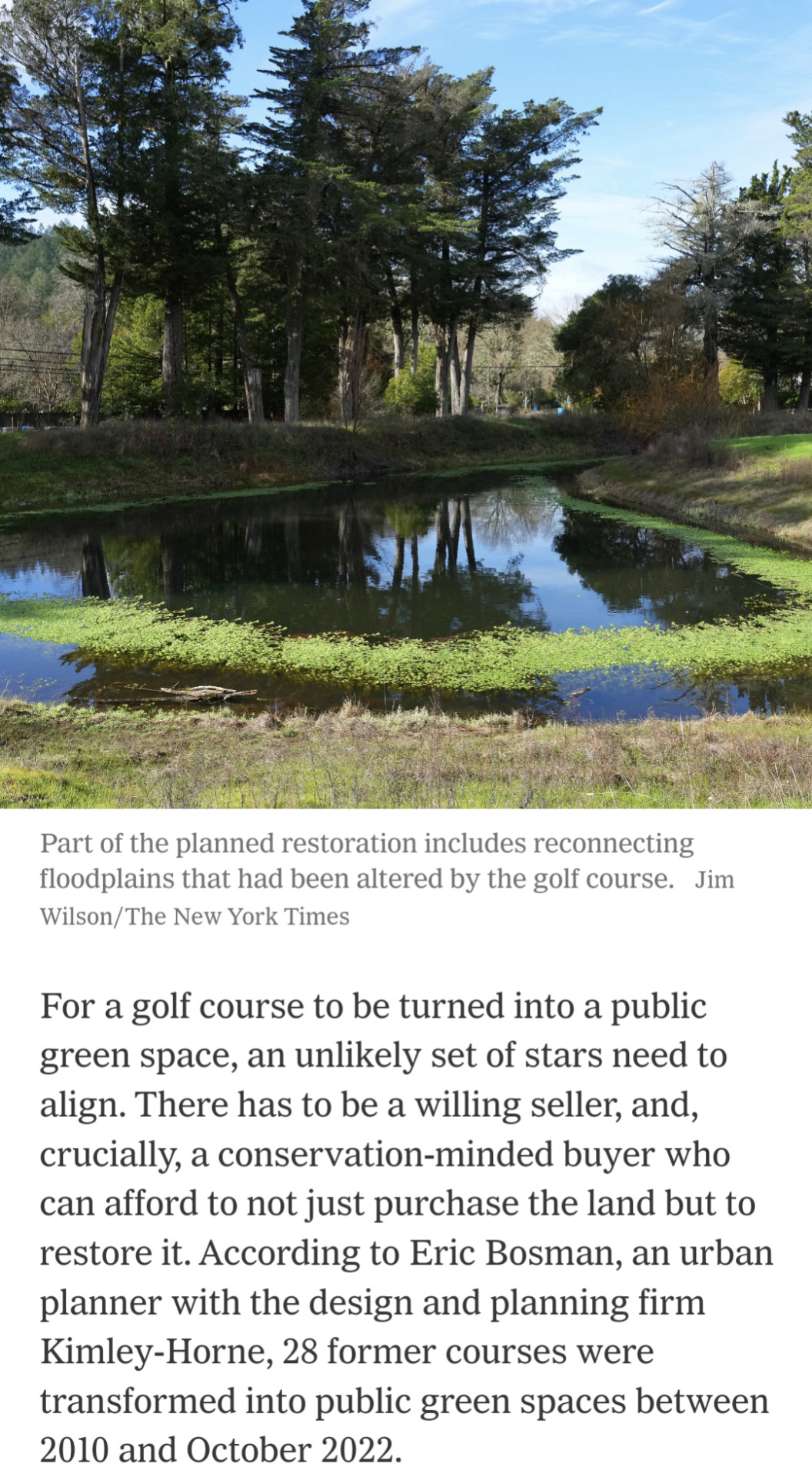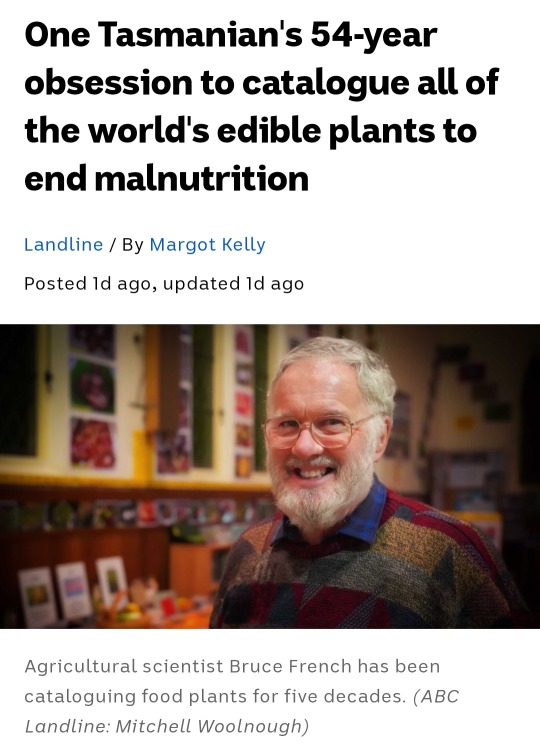Text
I get a little annoyed at how writings don't give Native North American peoples any agency in agricultural technologies
Domestication takes hundreds or thousands of years to accomplish, so it's weird to me that so many sources claim that food plants native to North America were cultivated into existence after European settlement, from a "wild" ancestor into a highly desirable crop
Take for example, the famous Concord grape. Supposedly it was bred from wild ancestors in a few years by just one guy.
With pecans, the word itself is Algonquin, so it's harder to deny that Native Americans cultivated them, but supposedly "domestication began in the 1800's". and as the source says, "wild-type" pecans are perfectly acceptable for sale in the market
And then there is nonsense like all the sources that will tell you pawpaws are an "evolutionary anachronism" from when they were distributed by giant ground sloths and other megafauna, as though humans don't count.
Are we to believe that indigenous peoples knew nothing of plant breeding? When the Cherokee were given peaches, apples, and watermelon, they adopted the new plants for use in their orchards and soon developed their own breeds.
Don't even get me started on all the plants that were almost lost and largely not used anymore, like Rivercane and the American Chestnut.
1K notes
·
View notes
Text
Many vegetables, most noticeably sweet corn and sugarsnap peas, are full of sugars that start turning to starch as soon as they're picked, so you will get the best and most flavorful experience if you eat them as close to harvest as possible.
Squash is full of starch that slowly turns to sugars once it gets picked, so you will get the best and most flavorful experience if you wait six weeks to three months (depending on the variety) after harvest before eating them.
Cold-hardy roots and brassicas are full of starch that turns to sugars after exposure to frost, so you will get the best and most flavorful eating experience if you wait to pick them until they've gone through multiple freezes.
This has been Vegetable Lore With Scribe.
27K notes
·
View notes
Text
Free live gardening event that gives advice on planning, scheduling, and succession planting your garden!
3 notes
·
View notes
Text
What I was taught growing up: Wild edible plants and animals were just so naturally abundant that the indigenous people of my area, namely western Washington state, didn't have to develop agriculture and could just easily forage/hunt for all their needs.
The first pebble in what would become a landslide: Native peoples practiced intentional fire, which kept the trees from growing over the camas praire.
The next: PNW native peoples intentionally planted and cultivated forest gardens, and we can still see the increase in biodiversity where these gardens were today.
The next: We have an oak prairie savanna ecosystem that was intentionally maintained via intentional fire (which they were banned from doing for like, 100 years and we're just now starting to do again), and this ecosystem is disappearing as Douglas firs spread, invasive species take over, and land is turned into European-style agricultural systems.
The Land Slide: Actually, the native peoples had a complex agricultural and food processing system that allowed them to meet all their needs throughout the year, including storing food for the long, wet, dark winter. They collected a wide variety of plant foods (along with the salmon, deer, and other animals they hunted), from seaweeds to roots to berries, and they also managed these food systems via not only burning, but pruning, weeding, planting, digging/tilling, selectively harvesting root crops so that smaller ones were left behind to grow and the biggest were left to reseed, and careful harvesting at particular times for each species that both ensured their perennial (!) crops would continue thriving and that harvest occurred at the best time for the best quality food. American settlers were willfully ignorant of the complex agricultural system, because being thus allowed them to claim the land wasn't being used. Native peoples were actively managing the ecosystem to produce their food, in a sustainable manner that increased biodiversity, thus benefiting not only themselves but other species as well.
So that's cool. If you want to read more, I suggest "Ancient Pathways, Ancestral Knowledge: Ethnobotany and Ecological Wisdom of Indigenous Peoples of Northwestern North America" by Nancy J. Turner
35K notes
·
View notes
Text
"In response to last year’s record-breaking heat due to El Niño and impacts from climate change, Indigenous Zenù farmers in Colombia are trying to revive the cultivation of traditional climate-resilient seeds and agroecology systems.
One traditional farming system combines farming with fishing: locals fish during the rainy season when water levels are high, and farm during the dry season on the fertile soils left by the receding water.
Locals and ecologists say conflicts over land with surrounding plantation owners, cattle ranchers and mines are also worsening the impacts of the climate crisis.
To protect their land, the Zenù reserve, which is today surrounded by monoculture plantations, was in 2005 declared the first Colombian territory free from GMOs.
...
In the Zenù reserve, issues with the weather, climate or soil are spread by word of mouth between farmers, or on La Positiva 103.0, a community agroecology radio station. And what’s been on every farmer’s mind is last year’s record-breaking heat and droughts. Both of these were charged by the twin impacts of climate change and a newly developing El Niño, a naturally occurring warmer period that last occurred here in 2016, say climate scientists.
Experts from Colombia’s Institute of Hydrology, Meteorology and Environmental Studies say the impacts of El Niño will be felt in Colombia until April 2024, adding to farmers’ concerns. Other scientists forecast June to August may be even hotter than 2023, and the next five years could be the hottest on record. On Jan. 24, President Gustavo Petro said he will declare wildfires a natural disaster, following an increase in forest fires that scientists attribute to the effects of El Niño.
In the face of these changes, Zenù farmers are trying to revive traditional agricultural practices like ancestral seed conservation and a unique agroecology system.

Pictured: Remberto Gil’s house is surrounded by an agroforestry system where turkeys and other animals graze under fruit trees such as maracuyá (Passiflora edulis), papaya (Carica papaya) and banana (Musa acuminata colla). Medicinal herbs like toronjil (Melissa officinalis) and tres bolas (Leonotis nepetifolia), and bushes like ají (Capsicum baccatum), yam and frijol diablito (beans) are part of the undergrowth. Image by Monica Pelliccia for Mongabay.
“Climate change is scary due to the possibility of food scarcity,” says Rodrigo Hernandez, a local authority with the Santa Isabel community. “Our ancestral seeds offer a solution as more resistant to climate change.”
Based on their experience, farmers say their ancestral seed varieties are more resistant to high temperatures compared to the imported varieties and cultivars they currently use. These ancestral varieties have adapted to the region’s ecosystem and require less water, they tell Mongabay. According to a report by local organization Grupo Semillas and development foundation SWISSAID, indigenous corn varieties like blaquito are more resistant to the heat, cariaco tolerates drought easily, and negrito is very resistant to high temperatures.
The Zenù diet still incorporates the traditional diversity of seeds, plant varieties and animals they consume, though they too are threatened by climate change: from fish recipes made from bocachico (Prochilodus magdalenae), and reptiles like the babilla or spectacled caiman (Caiman crocodilus), to different corn varieties to prepare arepas (cornmeal cakes), liquor, cheeses and soups.
“The most important challenge we have now is to save ancient species and involve new generations in ancestral practice,” says Sonia Rocha Marquez, a professor of social sciences at Sinù University in the city of Montería.
...[Despite] land scarcity, Negrete says communities are developing important projects to protect their traditional food systems. Farmers and seed custodians, like Gil, are working with the Association of Organic Agriculture and Livestock Producers (ASPROAL) and their Communitarian Seed House (Casa Comunitaria de Semillas Criollas y Nativas)...

Pictured: Remberto Gil is a seed guardian and farmer who works at the Communitarian Seed House, where the ASPROL association stores 32 seeds of rare or almost extinct species. Image by Monica Pelliccia for Mongabay.
Located near Gil’s house, the seed bank hosts a rainbow of 12 corn varieties, from glistening black to blue to light pink to purple and even white. There are also jars of seeds for local varieties of beans, eggplants, pumpkins and aromatic herbs, some stored in refrigerators. All are ancient varieties shared between local families.
Outside the seed bank is a terrace where chickens and turkeys graze under an agroforestry system for farmers to emulate: local varieties of passion fruit, papaya and banana trees grow above bushes of ají peppers and beans. Traditional medicinal herbs like toronjil or lemon balm (Melissa officinalis) form part of the undergrowth.
Today, 25 families are involved in sharing, storing and commercializing the seeds of 32 rare or almost-extinct varieties.
“When I was a kid, my father brought me to the farm to participate in recovering the land,” says Nilvadys Arrieta, 56, a farmer member of ASPROAL. “Now, I still act with the same collective thinking that moves what we are doing.”
“Working together helps us to save, share more seeds, and sell at fair price [while] avoiding intermediaries and increasing families’ incomes,” Gil says. “Last year, we sold 8 million seeds to organic restaurants in Bogotà and Medellín.”
So far, the 80% of the farmers families living in the Zenù reserve participate in both the agroecology and seed revival projects, he adds."
-via Mongabay, February 6, 2024
1K notes
·
View notes
Text
Golf Courses ARE Being Converted
The Solarpunk "fantasy" that so many of us tout as a dream vision, converting golf courses into ecological wonderlands, is being implemented across the USA according to this NYT article!
The article covers courses in Michigan, Pennsylvania, California, Colorado, and New York that are being bought and turned into habitat and hiking trails.

The article goes more into detail about how sand traps are being turned into sand boxes for kids, endangered local species are being planted, rocks for owl habitat are being installed, and that as these courses become wilder, they are creating more areas for biodiversity to thrive.
Most of the courses in transition are being bought by Local Land Trusts. Apparently the supply of golf courses in the USA is way over the demand, and many have been shut down since the early 2000s. While many are bought up and paved over, land Trusts have been able to buy several and turn them into what the communities want: public areas for people and wildlife. It does make a point to say that not every hold course location lends itself well to habitat for animals (but that doesn't mean it wouldn't make great housing!)

So lets be excited by the fact that people we don't even know about are working on the solutions we love to see! Turning a private space that needs thousands of gallons of water and fertilizer into an ecologically oriented public space is the future I want to see! I can say when I used to work in water conservation, we were getting a lot of clients that were golf courses that were interested in cutting their resource input, and they ended up planting a lot of natives! So even the golf courses that still operate could be making an effort.
So what I'd encourage you to do is see if there's any land or community trusts in your area, and see if you can get involved! Maybe even look into how to start one in your community! Through land trusts it's not always golf course conversions, but community gardens, solar fields, disaster adaptation, or low cost housing! (Here's a link to the first locator I found, but that doesn't mean if something isn't on here it doesn't exist in your area, do some digging!)
14K notes
·
View notes
Text
I know I am a little bit late to this but in Interstellar, the movie about black holes and time travel and ada yada, The inciting event of the movie is that humanity can no longer continue farming mono cultures and we need to leave the planet.
I feel like. There might have been. Maybe. Another option. One that was not mass Exodus. like. Possibly something a lil closer to home. Maybe a bit more complex than plant a corn, plant more corn. But probably less complicated than astrophysics.
5K notes
·
View notes
Text
I started with succulents like everyone else but tbh orchids are rapidly becoming my plant blorbos. Everyone takes care of them wrong and it's not your FAULT because the care instructions that come with them are!! Incorrect!!! If you do what they say then your orchid will die!!!! If you give them the right environment they're SO easy. They're such easy plants to grow. They have been UNFAIRLY SLANDERED by a MISINFORMATION campaign. They don't deserve this.
36K notes
·
View notes
Text
my main criticism of solarpunk is why isn’t it happening
40K notes
·
View notes
Text
When the number of confirmed cases doesn't even reach 1 billion, while the number of actual cases is higher, there is absolutely no way that the number of deaths even closely approaches 1 billion. Absolutely 0 chance that 12.5% of the world's population has died in 3.5 years from this. Could 1 billion people have long term effects of Covid? Absolutely. But there is 0 chance that that many people have died from Covid, ESPECIALLY since average world wide deaths average 67 million from all causes, so 234.5 million in 3.5 years, or 23.45% of the number you are claiming to have died from Covid in that period.
I am not arguing against the fact that the billionaire class should not exist. It should not. But overexaggerating your numbers to hyperbolise your statements is not the way to go about making that point.
https://covid19.who.int/
https://ourworldindata.org/births-and-deaths
People tell you a billion dollars is an absurd amount of money, but I don't think folks are quite grasping what that means.
A billionaire could give every human currently alive a million dollars, and they would still remain a billionaire.
Just think about that for a minute.
No one should be a billionaire.
12 notes
·
View notes
Text
That math isn't right.
1 billion divided by 1 million is 1 thousand
There are 8 billion people on the planet
To give everyone 1 million dollars, the person would have to be a quadrillionaire
People tell you a billion dollars is an absurd amount of money, but I don't think folks are quite grasping what that means.
A billionaire could give every human currently alive a million dollars, and they would still remain a billionaire.
Just think about that for a minute.
No one should be a billionaire.
12 notes
·
View notes
Text
No, you can't, their FAQ specifically addresses that.

discord drastically changed it’s UI. please be strong autistic people in my phone
62K notes
·
View notes
Text
Cows can kick backwards.
"People unfamiliar with dairy cattle anticipate kicking as the major risk in handling cattle. It is true that cattle can “cow kick” with a forward-lateral-backward kick, but some cows also kick straight back with amazing accuracy. Not discounting the dangers of being kicked, clinicians should be aware that a cow’s head may be her most dangerous weapon. Anyone who has been maliciously butted or repeatedly smashed by a cow’s head understands the inherent dangers. Similarly, a mature bull’s head is a potentially lethal weapon."
https://www.sciencedirect.com/topics/agricultural-and-biological-sciences/tie-stalls

For horses yes, but cattle are not capable of kicking backwards, only to the side.
79 notes
·
View notes
Text
National Clean Your Home Month, aka NaClYoHo or "Salty Pirates" month, is soon to be upon us!
Each November, I "host" NaClYoHo, where participants work to make their living spaces more comfortable and pleasant. The full manifesto is at the link, but the basic premise is that each day in November you put on a podcast, tv show, playlist, or other media, and clean or organize some aspect of your home.
It's meant to be a low-stress way to both do a yearly cleaning and also participate in an intensive project like National Novel Writing Month without having to write a novel. I'll be posting about it again before November kicks off, but I thought I'd link to the manifesto well ahead of time, so people could brace themselves. :D
This year my big goals are to figure out how to keep my floors truly clean, replace at least one rug, and clear out the storage nook where I have a bunch of stuff that needs sorting through. I am also going to try to dedicate some time to researching those "bathroom refresh" companies that basically just put a shell over your existing shower/tub/walls and see if it's feasible for my bathroom, which desperately needs it.
10K notes
·
View notes
Text

https://www.abc.net.au/news/2020-08-22/food-plant-solutions-malnutrition-farming-edible-plants/12580732
https://fms.cmsvr.com/fmi/webd/Food_Plants_World
This guy is my new hero. I LOVE learning about native food plants that just grow everywhere without human help.
The database is a little clunky to use (especially on a phone), but still loads of excellent information.
82K notes
·
View notes
